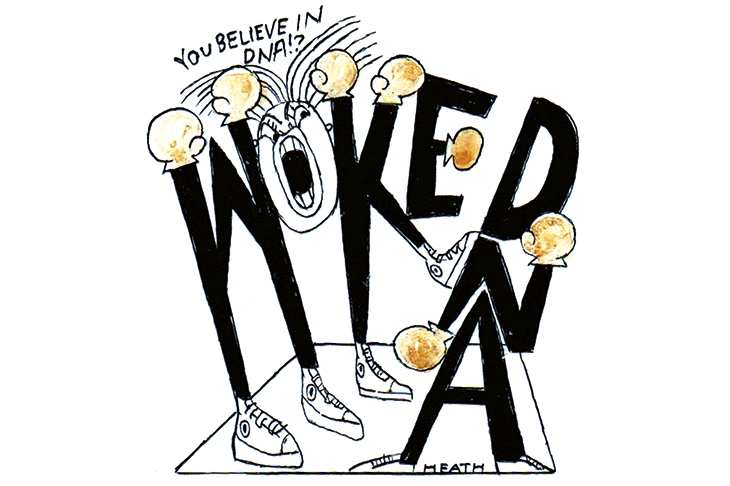What is truth? You can speak of moral truths and aesthetic truths but I’m not concerned with those here, important as they may be. By truth I shall mean the kind of truth that a commission of inquiry or a jury trial is designed to establish. I hold the view that scientific truth is of this commonsense kind, although the methods of science may depart from common sense and its truths may even offend it.
Commissions of inquiry may fail, but we assume a truth lurking there even if we don’t have enough evidence. Juries sometimes get it wrong and falsehoods are often sincerely believed. Scientists too can make mistakes and publish erroneous conclusions. That’s all regrettable but not deeply sinister. What is profoundly troubling, however, is any wanton attack on truth itself: the value of truth, the very existence of truth. This is what concerns me here.
In Nineteen Eighty-Four, George Orwell’s O’Brien held that two plus two equals five if the Party decrees it so. The Ministry of Truth existed for the purpose of disseminating lies. In the past four years, the US government has moved in that direction. World-weary cynics sigh that all politicians lie: it goes
with the territory. But normal politicians lie as a last resort and try to cover it up.
Donald Trump is in a class of his own. For him, lying is not a last resort. It never occurs to him to do anything else. And far from covering up a lie, he can stick to it: his well-named ‘base’ will love him the more for it, and will believe the lie, however far-fetched and shamelessly self-serving. Fortunately Trump is too incompetent to fulfill Orwell’s nightmare, and anyway he is on the way out, albeit kicking and screaming and trying to pull the house down with him as he goes.
A more insidious threat to truth comes from certain schools of academic philosophy. There is no objective truth, they say, no natural reality, only social constructs. Extreme exponents attack logic and reason themselves, as tools of manipulation or ‘patriarchal’ weapons of domination. The philosopher and historian of science Noretta Koertge wrote this in Skeptical Inquirer magazine in 1995, and things haven’t got any better since:
‘Instead of exhorting young women to prepare for a variety of technical subjects by studying science, logic, and mathematics, Women’s Studies students are now being taught that logic is a tool of domination…the standard norms and methods of scientific inquiry are sexist because they are incompatible with “women’s ways of knowing”. The authors of the prize-winning book with this title report that the majority of the women they interviewed fell into the category of “subjective knowers”, characterized by a “passionate rejection of science and scientists”. These “subjectivist” women see the methods of logic, analysis and abstraction as “alien territory belonging to men” and “value intuition as a safer and more fruitful approach to truth”.’
That way madness lies. As reported by Barbara Ehrenreich and Janet McIntosh in the Nation in 1997, the social psychologist Phoebe Ellsworth, at an interdisciplinary seminar, praised the virtues of the experimental method. Audience members protested that the experimental method was ‘the brainchild of white Victorian males’. Ellsworth acknowledged this, but pointed out that the experimental method had led to, for example, the discovery of DNA. This was greeted with disdain: ‘You believe in DNA?’
You can’t not ‘believe in DNA’. DNA is a fact. The DNA molecule is a double helix, a long spiral staircase with exactly four kinds of steps called nucleotides. The one- dimensional sequence of these four nucleotide ‘letters’ is the genetic code which specifies the nature of every animal, plant, fungus, bacterium and archaean. DNA sequences can be compared, letter for letter, between any creature and any other, much as one might compare folios of Hamlet. From this we can compute a numerical figure for the closeness of cousinship of any two creatures and hence, eventually, build up a complete family tree of all life.
For, whether we like it or not, it is a true fact that we are cousins of kangaroos, that we share an ancestor with starfish, and that we and the starfish and kangaroo share a more remote ancestor with jellyfish. The DNA code is a digital code, differing from computer codes only in being quaternary instead of binary. We know the precise details of the inter- mediate stages by which the code is read in our cells, and its four-letter alphabet translated, by molecular assembly-line machines called ribosomes, into a 20-letter alphabet of amino acids, the building blocks of protein chains and so of bodies.
If your philosophy dismisses all that as patriarchal domination, so much the worse for your philosophy. Perhaps you should stay away from doctors with their experimentally tested medicines, and go to a shaman or witch doctor instead. If you need to travel to a conference of like-minded philosophers, you’d better not go by air. Planes fly because a lot of scientifically trained mathematicians and engineers got their sums right. They did not use ‘intuitive ways of knowing’. Whether they happened to be white and male or sky-blue-pink and hermaphrodite is supremely, triumphantly irrelevant. Logic is logic is logic, no matter if the individual who wields it also happens to wield a penis.
A mathematical proof reveals a definite truth, no matter whether the mathematician ‘identifies as’ female, male or hippopotamus. If you decide to fly to that conference, Newton’s laws and Bernoulli’s principle will see you safe. And no, Newton’s Principia is not a ‘rape manual’, as was ludicrously said by the noted feminist philosopher Sandra Harding. It is a supreme work of genius by one of Homo sapiens’ most sapient specimens — who also happened to be a not very nice man.
It is true that Newton’s laws are approximations which need modifying under extreme circumstances such as when objects travel at near the speed of light. Those philosophers of science who fixate on the case of Newton and Einstein love to say that scientific truths are only ever provisional approximations that have so far resisted falsification. But there are many scientific truths — we share an ancestor with baboons is one example — which are just plain true, in the same sense as ‘New Zealand lies south of the equator’ is not a provisional hypothesis, pending possible falsification.
The physics of the very small also goes beyond Newton. Quantum theory is too weird for most human brains to accommodate intuitively. Yet the accuracy with which its predictions are fulfilled is shattering and beyond all doubt. If I can’t get my head around the weirdness of a theory which is validated by such predictions, that’s just too bad. There’s no law that says truths about nature have to be comprehensible by the human brain. We have to live with the limitations of a brain that was built by Darwinian natural selection of hunter-gatherer ancestors on the African savanna, where medium-sized things like antelopes and potential mates moved at medium speeds. It’s actually remarkable that human brains — even if only a minority of them — are capable of doing modern physics at all. It is an open question whether there remain deep truths about the universe which human brains not only don’t yet understand but can never understand. I find that open question immensely exciting, whatever the answer to it may be.
Theologians love their ‘mysteries’, such as the ‘mystery of the Trinity’ (how can God be both three and one at the same time?) and the ‘mystery of transubstantiation’ (how can the contents of a chalice be simultaneously wine and blood?). When challenged to defend such stuff, they may retort that scientists too have their mysteries. Quantum theory is mysterious to the point of being downright perverse. What’s the difference? I’ll tell you the difference and it’s a big one.
Quantum theory is validated by predictions fulfilled to so many decimal places that it’s been compared to predicting the width of North America to within one hairsbreadth. Theological theories make no predictions at all, let alone testable ones.
Of course, not all the sciences can boast the formidable accuracy of physics. We biologists stand in awe of the LIGO experiments in which gravitational waves, having traveled a billion light years, are detected by measurements accurate to less than a thousandth the width of a proton. Biological experimenters have to confront problems like the subjective bias of the experimenter — ‘intuitive ways of knowing’. Medical scientists have perfected safeguards aimed precisely against intuitive ways of knowing, because these are highly likely to mislead. The double-blind control test has become the gold standard for demonstrating the efficacy of a medical treatment. A new drug must be compared with a placebo control and the comparison tested statistically. Neither the patients, nor the doctors running the tests, nor the nurses administering the doses, nor the analysts evaluating the results are allowed to know which patients were given the placebo, which the drug, until all the results are in.
***
Get a print and digital subscription to The Spectator.
Try a month free, then just $7.99 a month
***
I myself conducted a double blind test of dowsing (water divining). It was pathetically touching to witness the sincere distress of the professional dowsers when they failed — every single one of them — to perform above chance level. The poor things had never before been tested under double blind conditions: never before been deprived of whatever subliminal cues normally inform their ‘subjective ways of knowing’. I treasure the remark of a homeopathic doctor who, when his methods failed under double blind testing conditions, said: ‘You see. This is why we don’t do double blind tests any more. They never work!’
A layperson’s version of the pernicious philosophy I mentioned earlier is the familiar bleat of: ‘Well it may not be true for you but it is true for me.’ No, it’s either true or it isn’t. For both of us. As somebody once said (authorship multiply attributed), you are entitled to your own opinion but not to your own facts.
Some of what I have claimed here about scientific truth may come across as arrogant. So might my disparagement of certain schools of philosophy. Science really does know a lot about what is true, and we do have methods in place for finding out a lot more. We should not be reticent about that. But science is also humble. We may know what we know, but we also know what we don’t know. Scientists love not knowing because they can go to work on it. The history of science’s increasing knowledge, especially during the last four centuries, is a spectacular cascade of truths following one on the other. We may choose to call it a cumulative increase in the number of truths that we know. Or we can tip our hat to (a better class of) philosophers and talk of successive approximations towards yet-to-be-falsified provisional truths. Either way, science can properly claim to be the gold standard of truth.
This article was originally published in The Spectator’s UK magazine. Subscribe to the US edition here.

























